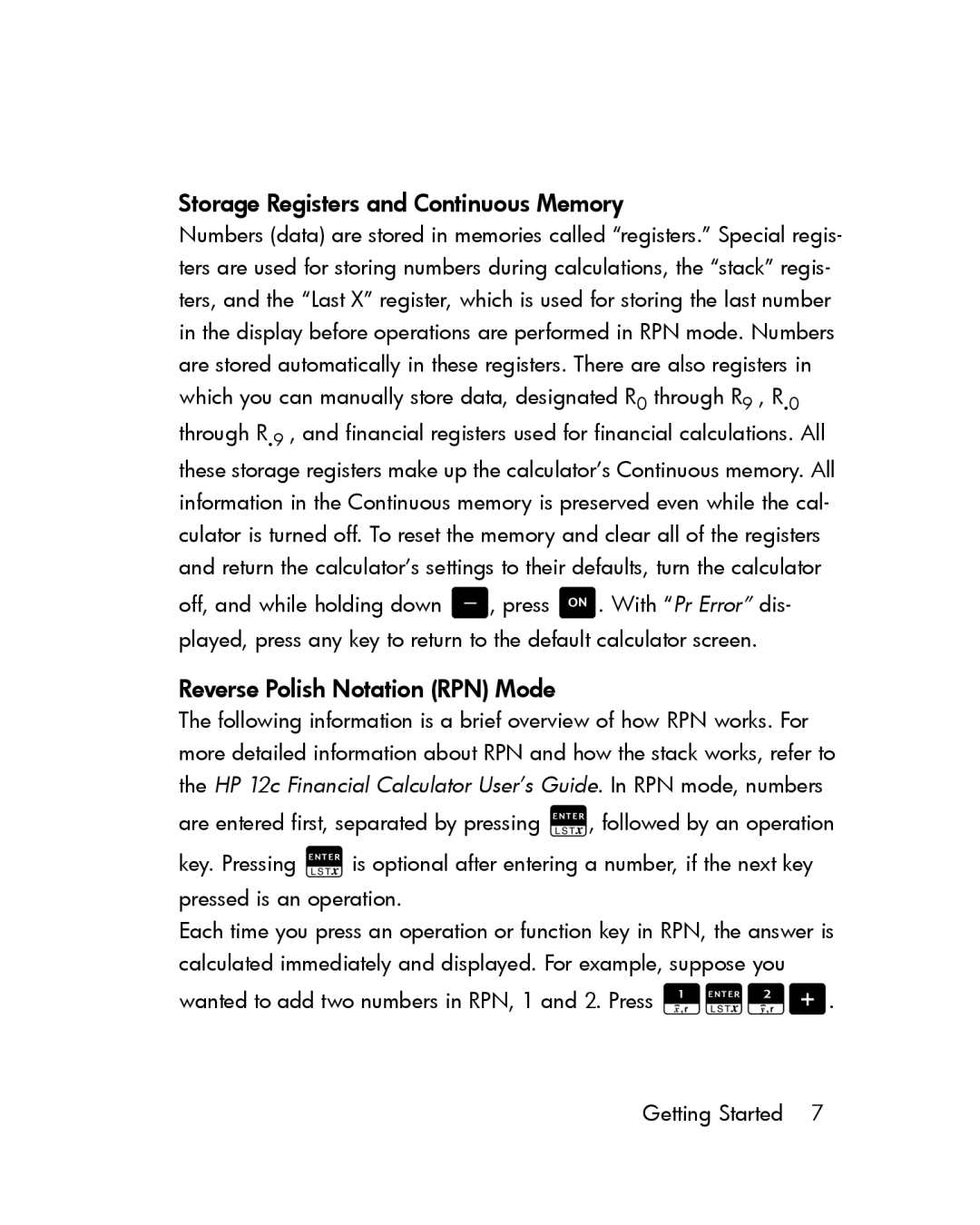Storage Registers and Continuous Memory
Numbers (data) are stored in memories called “registers.” Special regis- ters are used for storing numbers during calculations, the “stack” regis- ters, and the “Last X” register, which is used for storing the last number in the display before operations are performed in RPN mode. Numbers are stored automatically in these registers. There are also registers in which you can manually store data, designated R0 through R9 , R.0 through R.9 , and financial registers used for financial calculations. All these storage registers make up the calculator’s Continuous memory. All information in the Continuous memory is preserved even while the cal- culator is turned off. To reset the memory and clear all of the registers and return the calculator’s settings to their defaults, turn the calculator off, and while holding down Z, press S. With “Pr Error” dis- played, press any key to return to the default calculator screen.
Reverse Polish Notation (RPN) Mode
The following information is a brief overview of how RPN works. For more detailed information about RPN and how the stack works, refer to the HP 12c Financial Calculator User’s Guide. In RPN mode, numbers
are entered first, separated by pressing R, followed by an operation key. Pressing Ris optional after entering a number, if the next key pressed is an operation.
Each time you press an operation or function key in RPN, the answer is calculated immediately and displayed. For example, suppose you
wanted to add two numbers in RPN, 1 and 2. Press
Getting Started 7
